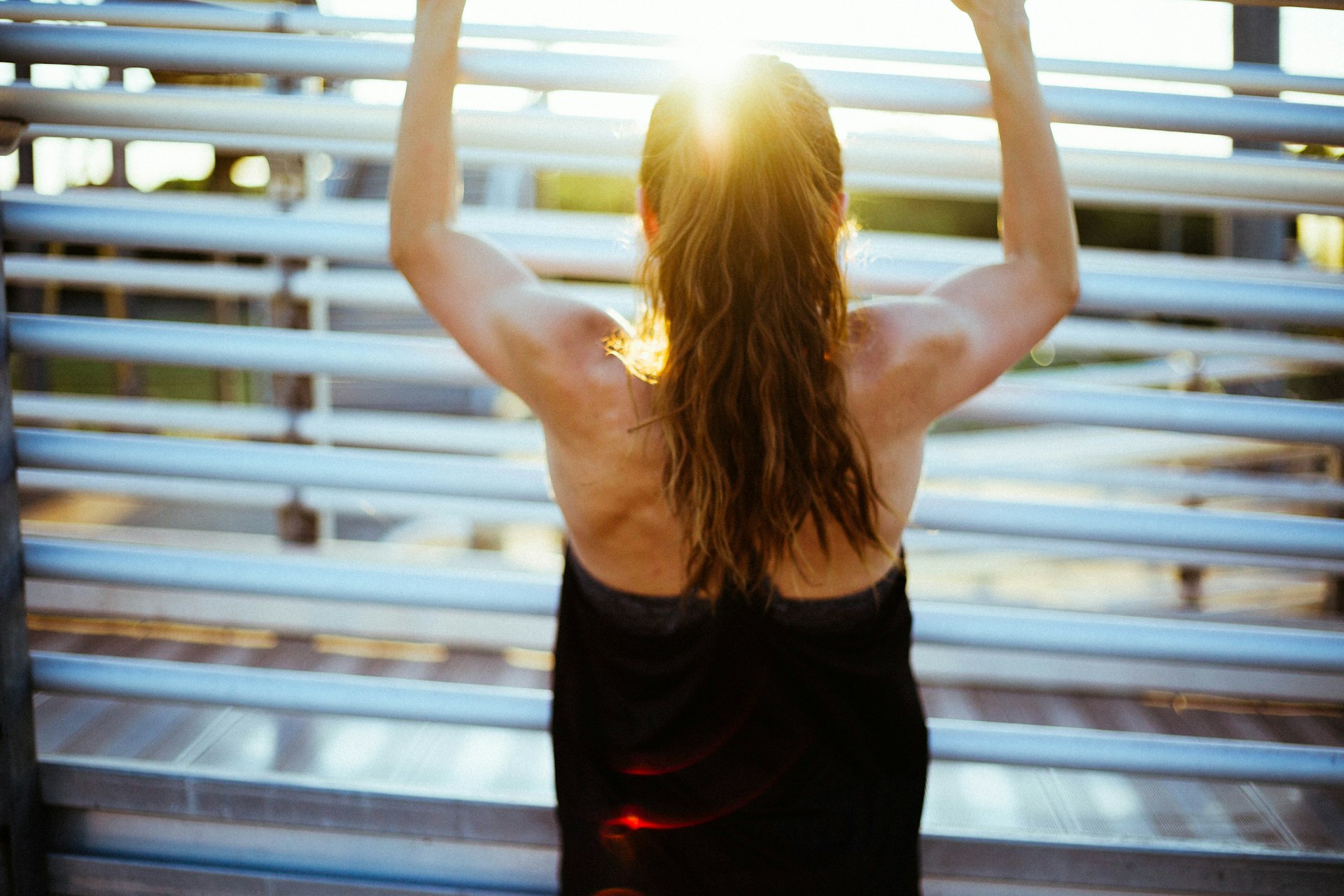Transform Your Back: Yoga Sequences for Better Posture and Relief from Back Pain

Photo by Shivam Tiwari on Unsplash
Introduction: Why Yoga for Posture and Back Pain?
Modern lifestyles often lead to poor posture and persistent back pain. Prolonged sitting, inadequate movement, and daily stress can weaken core muscles and tighten the hips, hamstrings, and lower back. Yoga offers a holistic approach to counteract these challenges by combining mindful movement, targeted stretching, and strengthening exercises. Through consistent practice, you can address muscular imbalances, relieve tension, and support a healthier spine long-term [1] [2] .
Understanding the Connection: Posture, Pain, and Muscular Imbalances
Poor posture contributes to muscle imbalances, especially in the core, hips, and lower back. These imbalances may lead to chronic pain, tension, and reduced mobility. Yoga sequences designed for posture improvement and back pain relief address:
- Weak core and glute muscles
- Tight hip flexors, hamstrings, and lower back
- Stiffness in the thoracic (mid-back) region
- Misalignments in the pelvis and spine
By targeting these areas, yoga helps restore alignment and flexibility while promoting overall spinal health [3] .
Essential Yoga Poses for Better Posture and Back Pain Relief
1. Child’s Pose (Balasana)
This gentle resting position elongates the spine, relaxes the hips, and helps release tension in the lower back. To perform Child’s Pose:
- Kneel on the floor, bringing your big toes together and knees apart.
- Sit your hips back toward your heels.
- Extend your arms forward and rest your forehead on the mat.
- Breathe deeply and hold for 30-60 seconds.
Child’s Pose is an accessible way to reset your posture and reconnect with your breath. It’s particularly effective when performed at the start or end of your yoga sequence [2] .
2. Cat-Cow Stretch (Marjaryasana-Bitilasana)
This dynamic movement increases spinal flexibility and warms up the back muscles:
- Start on hands and knees with wrists under shoulders and knees under hips.
- On an inhale, arch your back (Cow), lifting your head and tailbone.
- On an exhale, round your spine (Cat), tucking your chin and tailbone.
- Repeat for 6-8 breaths, moving slowly and mindfully.
Cat-Cow helps mobilize the entire spine and prepares the body for deeper stretches [2] .
3. Supported Child’s Pose (Yin Variation)
For those with limited flexibility or increased discomfort, try Supported Child’s Pose:
- Place a bolster or stack of blankets between your knees.
- Lower your torso onto the prop, resting your head and arms comfortably.
- Hold for 2-5 minutes, focusing on releasing tension in the lower back.
This restorative pose allows the tissues around the spine to lengthen gradually and safely [1] .
4. Reclined Butterfly (Supta Baddha Konasana)
This gentle hip opener stretches the groin and lower back:
- Lie on your back with knees bent and soles of the feet together.
- Allow knees to drop out to the sides; use yoga blocks or pillows under knees for support.
- Arms can rest at your sides or on your belly.
- Stay for 2-5 minutes, breathing deeply.
Reclined Butterfly encourages hip flexibility and relieves lower back strain, especially after prolonged sitting [1] .
5. Dead Pigeon (Figure Four Stretch)
This pose targets the external hip rotators and glutes, often providing immediate relief:
- Lie on your back with both feet flat on the mat.
- Cross your left ankle over your right thigh.
- Hold the back of your right thigh and gently draw the leg toward your chest.
- Keep your tailbone on the mat and hold for 5-10 breaths per side.
Dead Pigeon is especially beneficial for those with tight hips or sciatic pain [3] .
6. Cat-Cow and Bridge Sequence
Combining Cat-Cow with Bridge Pose helps mobilize and strengthen the spine:

Photo by GMB Fitness on Unsplash
- Perform Cat-Cow for 6-8 breaths as described above.
- Transition to Bridge Pose: Lie on your back, knees bent, feet hip-width apart.
- Press feet and arms into the floor, lifting your hips toward the ceiling.
- Hold for 30 seconds, then lower slowly.
- Repeat 2-3 times.
Bridge Pose strengthens the glutes, core, and lower back, supporting healthy posture [4] .
7. Locust Pose (Salabhasana)
This gentle backbend helps activate the posterior chain (back muscles, glutes, and legs):
- Lie on your stomach with arms by your sides, palms facing up.
- As you inhale, lift your head, chest, arms, and legs off the floor.
- Hold for up to 1 minute, then relax.
Locust Pose builds back strength and counters the effects of slouching [4] .
Step-by-Step Implementation: Building Your Home Practice
To achieve lasting benefits, consistency is key. Here’s how you can integrate these sequences into your daily routine:
- Choose a quiet, comfortable space with enough room to move freely.
- Begin with gentle warm-up poses (Child’s Pose, Cat-Cow) to prepare your body.
- Progress to deeper stretches and strengthening poses (Reclined Butterfly, Dead Pigeon, Bridge, Locust).
- Use props like yoga blocks, straps, or blankets for support and alignment as needed.
- Hold each stretch for the recommended time, focusing on slow, deep breathing.
- Finish with a relaxation pose (such as Supported Child’s Pose) to allow your body to integrate the benefits.
Practicing 3-5 times per week can result in noticeable improvements in posture and a reduction in back pain over time. If you are new to yoga or have existing health concerns, consider consulting a certified yoga instructor or healthcare provider before starting a new exercise routine.
Practical Tips and Troubleshooting Common Challenges
Many people encounter obstacles when first starting a yoga practice for posture and back pain. Here are common challenges and how to address them:
- Discomfort in Poses: Adjust with props or modify the posture. Never force your body into any position.
- Inconsistent Practice: Set a regular schedule and start with short sessions to build the habit.
- Lack of Immediate Results: Benefits accumulate over time. Focus on gradual progress rather than quick fixes.
- Uncertainty About Alignment: Use online resources from reputable organizations (such as Yoga Alliance) or consider attending a beginner class for personalized feedback.
Alternative Approaches and Additional Resources
While yoga is highly effective, other complementary strategies can further support posture and back health:
- Pilates: Focuses on core stability and postural alignment.
- Physical Therapy: Tailored exercises for specific conditions, guided by a licensed professional.
- Ergonomic Adjustments: Set up your workspace to support neutral spine alignment and reduce strain.
You can find certified yoga instructors or classes by searching for “yoga for back pain” in your area, checking reputable directories, or visiting the official Yoga Alliance website for registered teachers and studios.
Summary and Key Takeaways
Yoga offers a powerful, accessible way to improve posture and reduce back pain through mindful movement, targeted stretching, and strength-building poses. By following step-by-step sequences, using props for support, and practicing regularly, you can experience lasting relief and greater ease in your daily life. Always listen to your body, seek guidance from qualified professionals when needed, and combine yoga with other healthy habits for the best results.



